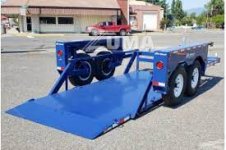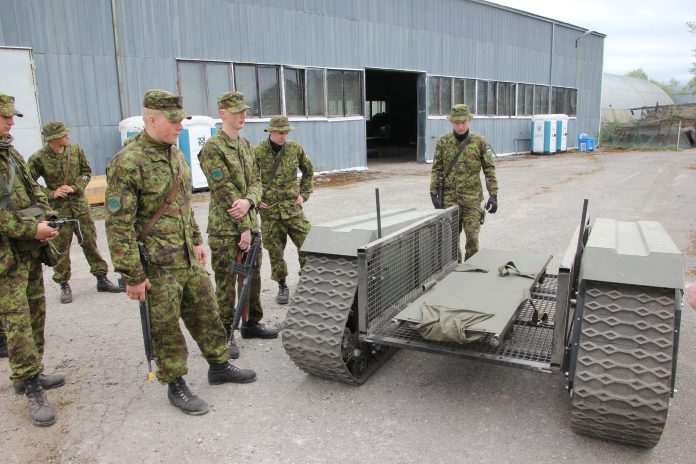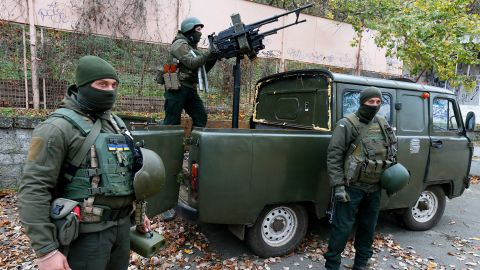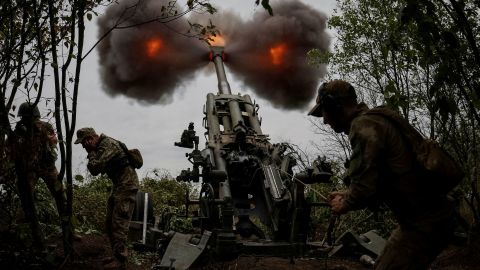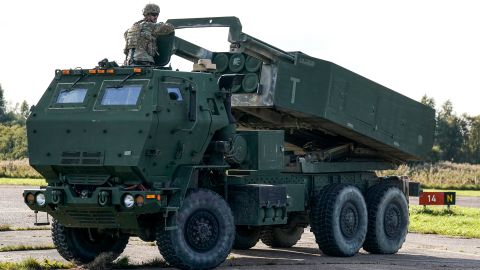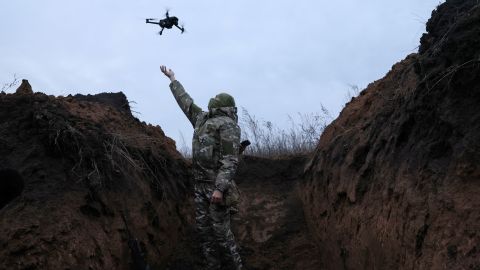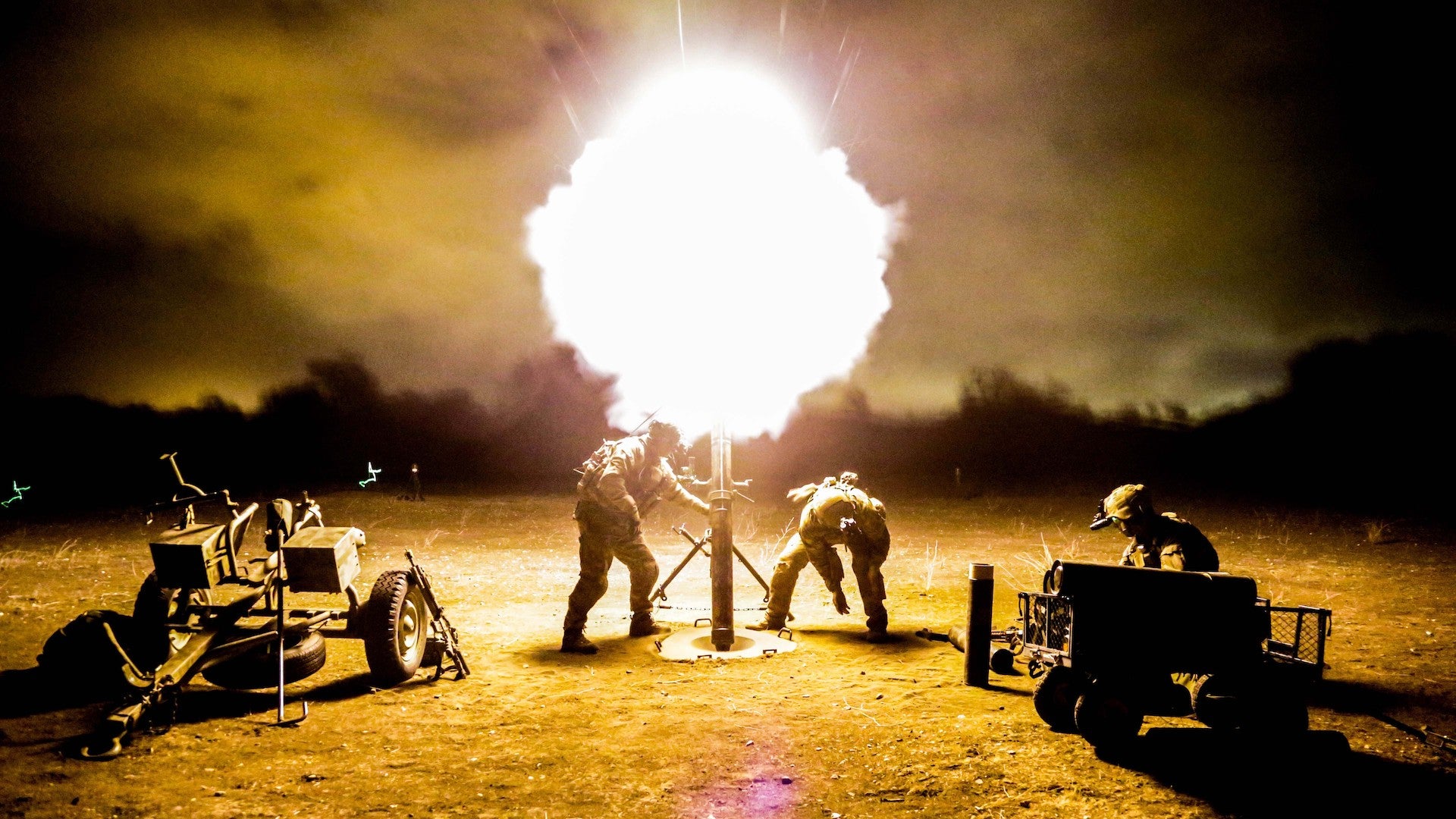How Ukraine became a laboratory for Western weapons and battlefield innovation
By
Katie Bo Lillis and
Oren Liebermann, CNN
Updated 7:08 AM EST, Sun January 15, 2023
CNN —
Last fall, as Ukraine won back large swaths of territory in a series of counterattacks, it pounded
Russian forces with
American-made artillery and rockets. Guiding some of that artillery was a homemade targeting system that Ukraine developed on the battlefield.
A piece of Ukrainian-made software has turned readily available tablet computers and smartphones into sophisticated targeting tools that are now used widely across the Ukrainian military.
The result is a mobile app that feeds satellite and other intelligence imagery into a real-time targeting algorithm that helps units near the front direct fire onto specific targets. And because it’s an app, not a piece of hardware, it’s easy to quickly update and upgrade, and available to a wide range of personnel.
US officials familiar with the tool say it has been highly effective at directing Ukrainian artillery fire onto Russian targets.
The targeting app is among dozens of examples of battlefield innovations that Ukraine has come up with over nearly a year of war, often finding cheap fixes to expensive problems.
Small, plastic drones, buzzing quietly overhead, drop grenades and other ordinance on Russian troops. 3D printers now make spare parts so soldiers can repair heavy equipment in the field. Technicians have converted ordinary pickup trucks into mobile missile launchers. Engineers have figured out how to strap sophisticated US missiles onto older Soviet fighter jets such as the MiG-29, helping keep the Ukrainian air force flying after nine months of war.
Ukraine has even developed its own anti-ship weapon, the Neptune, based off Soviet rocket designs that can
target the Russian fleet from almost 200 miles away.
This kind of Ukrainian ingenuity has impressed US officials, who have praised Kyiv’s ability to “MacGyver” solutions to its battlefield needs that fill in important tactical gaps left by the larger, more sophisticated Western weaponry.
Ukrainian servicemen of National Guard operate with a homemade anti-aircraft machine gun to destroy drones in Mykolaiv, Ukraine.
STR/NurPhoto/Getty Images
While
US and other Western officials don’t always have perfect insight into exactly how Ukraine’s custom-made systems work – in large part because they are not on the ground – both officials and open-source analysts say Ukraine has become a veritable battle lab for cheap but effective solutions.
“Their innovation is just incredibly impressive,” said Seth Jones, director of the international security program at the Center for Strategic and International Studies.
‘Real world battle testing’
Meanwhile, the war in Ukraine has also offered the United States and its allies a rare opportunity to study how their
own weapons systems perform under intense use – and what munitions both sides are using to score wins in this hotly fought modern war. US operations officers and other military officials have also tracked how successfully Russia has used cheap, expendable drones that explode on impact,
provided by Iran, to decimate the Ukrainian power grid.
Ukraine is “absolutely a weapons lab in every sense because none of this equipment has ever actually been used in a war between two industrially developed nations,” said one source familiar with Western intelligence. “This is real-world battle testing.”
For the US military, the war in Ukraine has been an incredible source of data on the utility of its own systems.
Some high-profile systems given to the Ukrainians – such as the Switchblade 300 drone and a missile designed to target enemy radar systems – have turned out to be less effective on the battlefield than anticipated, according to a US military operations officer with knowledge of the battlefield, as well as a recent British think tank study.
But the lightweight American-made M142 multiple rocket launcher, or HIMARS, has been critical to Ukraine’s success – even as officials have learned valuable lessons about the rate of maintenance repair those systems have required under such heavy use.
How Ukraine has used its limited supply of HIMARS missiles to wreak havoc on Russian command and control, striking command posts, headquarters and supply depots, has been eye-opening, a defense official said, adding that military leaders would be studying this for years.
Ukrainian service members fire a shell from an M777 Howitzer at a front line, as Russia's attack on Ukraine continues.
Gleb Garanich/Reuters
Another crucial piece of insight has been about the M777 howitzer, the powerful artillery that has been a critical part of Ukraine’s battlefield power. But the barrels of the howitzers lose their rifling if too many shells are fired in a short time frame, another defense official said, making the artillery less accurate and less effective.
The Ukrainians have also made tactical innovations that have impressed Western officials. During the early weeks of the war, Ukrainian commanders adapted their operations to employ small teams of dismounted infantry during the
Russian advance on Kyiv. Armed with shoulder-mounted Stinger and Javelin rockets, Ukrainian troops were able to sneak up on Russian tanks without infantry on their flanks.
The US has also closely studied the conflict for larger lessons on how a
war between two modern nations might be waged in the 21st century.
A High-Mobility Artillery Rocket System (HIMARS) during military exercises at Spilve Airport in Riga, Latvia.
Roman Koksarov/AP
The operations officer said that one lesson the US may take from this conflict is that towed artillery – like the M777 howitzer system – may be a thing of the past. Those systems are harder to move quickly to avoid return fire – and in a world of ubiquitous drones and overhead surveillance, “it’s very hard to hide nowadays,” this person said.
When it comes to lessons learned, “there’s a book to be written about this,” said Democratic Rep. Jim Himes of Connecticut, a member of the House Intelligence Committee.
‘A $10,000 one-way attack drone’
US defense contractors have also taken note of the novel opportunity to study – and market – their systems.
BAE Systems has already announced that the Russian success with their kamikaze drones has influenced how it is designing a new armored fighting vehicle for the Army, adding more armor to protect soldiers from attacks from above.
And different parts of the US government and industry have sought to test novel systems and solutions in a fight for which Ukraine needed all the help it could get.
Ukrainian soldiers are on standby with a US made Stinger MANPAD (man-portable air-defense system) on the frontline in Bakhmut, Ukraine
Pierre Crom/Getty Images
In the early days of the conflict, the National Geospatial-Intelligence Agency sent five lightweight, high-resolution surveillance drones to US Special Operations Command in Europe – just in case they might come in handy in Ukraine. The drones, made by a company called Hexagon, weren’t part of a so-called program of record at the Defense Department, hinting at the experimental nature of the conflict.
Navy Vice Adm. Robert Sharp, the head of the National Geospatial-Intelligence Agency at the time, even boasted publicly that the US had trained a “military partner” in Europe on the system.
“What this allows you to do is to go out underneath cloud cover and collect your own [geointelligence] data,” Sharp told CNN on the sidelines of a satellite conference in Denver last spring.
"Ghost", 24, a soldier with the 58th Independent Motorized Infantry Brigade of the Ukrainian Army, catches a drone while testing it so it can be used nearby.
Leah Millis/Reuters
Despite intense effort by a small group of US officials and outside industry, it remains unclear whether these drones ever made it into the fight.
Meanwhile, multiple intelligence and military officials told CNN they hoped that creating what the US military terms “attritable” drones – cheap, single-use weapons – has become a top priority for defense contractors.
“I wish we could make a $10,000 one-way attack drone,” one of these officials said, wistfully.
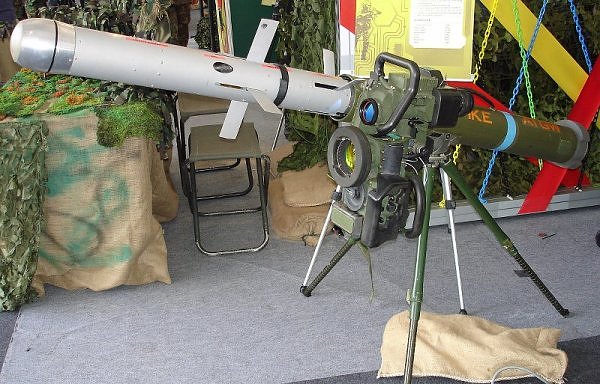
en.wikipedia.org


